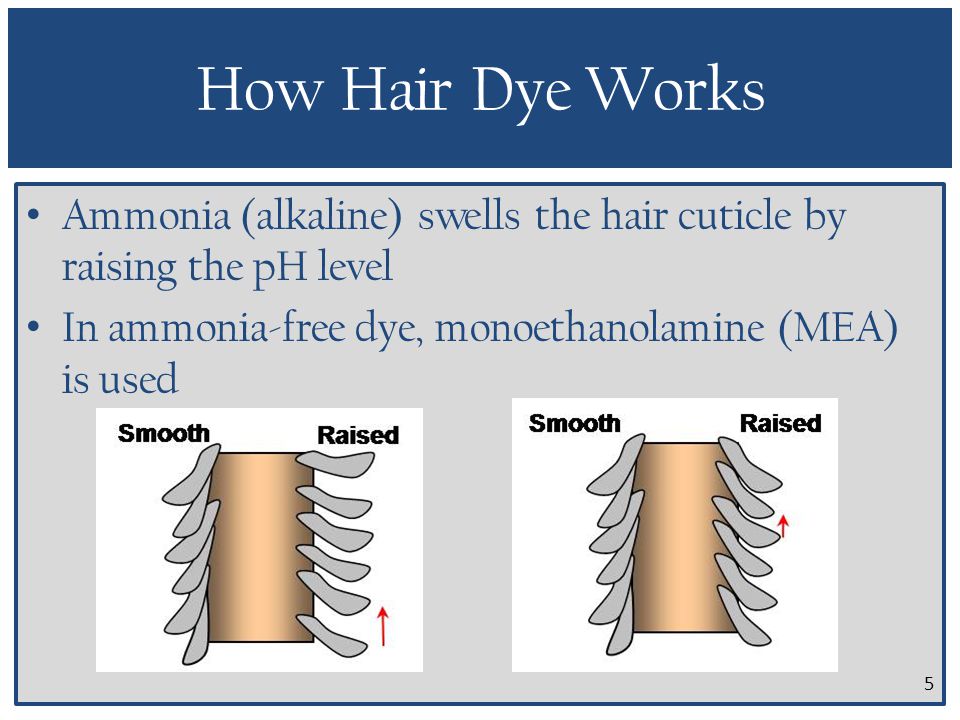
Just the Facts: Ammonia, MEA, & Your Hair Color
First, let me start out by being blunt: all permanent hair color needs a chemical alkalizer to open the cuticle. There is no such thing as permanent hair color that is chemical-free and still works. This is extremely important to understand when it comes to using hair color, especially for those who choose to use clean and organic-based products.
The science behind permanently dying your hair
The process of changing your hair color using dyes all boils down to the science and chemical reactions taking place during the process. At its natural state, your hair sits at a pH of 4.5-5.5. For the color to permeate the hair, there needs to be an alkaline agent to raise or adjust the pH so that the color can get through to the cuticle and get to the cortex.
Both ammonia and MEA, or monoethanolamine, are the alkaline agents most often used in hair dyes. And there are often misconceptions and myths when it comes to using either of these in your hair products. They both have pros and cons that mostly boil down to personal preference in the end.
Ammonia
For decades, ammonia has been the ingredient of choice. It provides the alkalinity needed to penetrate the color molecules and to help the peroxide lighten the existing pigments with the hair. Ammonia is a gas-based chemical, so it evaporates in a short time and leaves the hair. While ammonia has a distinct and strong odor, it is quickly rinsed out of the hair. However, ammonia can be aggressive on your locks, which can cause loss of porosity and lead to color fading at a more rapid pace.
When preparing color with ammonia, letting the color rest for 2-3 minutes can eliminate most of that odor. Also, fewer than 1% of people actually have an allergy or sensitivity to ammonia.
On the upside, the use of ammonia typically results in color that is more vibrant, more predictable, and lost longer. Also, ammonia is seen to provide superior grey coverage.
MEAs
Companies or brands that shy away from ammonia will typically use MEAs in their products instead. MEA is an organic chemical compound that is made up of amine and alcohol. Differentiating from ammonia being a gas, MEAs are in a liquid form, which means once applied, they must be removed from the hair.
When used in large percentages, MEAs can be toxic, flammable, and corrosive, but at the amount used in hair color, they are at the right levels for being a replacement pH adjuster in products considered ammonia-free. MEAs are generally less corrosive and less volatile than ammonia-based products.
Since the MEAs stay in the hair, some brands may even offer a special shampoo intended to be used after dying the hair. This specially formulated shampoo contains ammonia that removes the residual MEAs left on the tresses.
Many ‘organic’ salons and hairstylists prefer MEA-based products simply because of the lack of odor and less chance of skin irritation.
The BIG Difference
To recap, and explain it plainly, the biggest difference between ammonia and MEAs is the medium in which they exist and the presence or absence of fumes. Ammonia is a gas that leaves the hair on its own through the process, while MEAs are a liquid or oil-based, so they need to be properly removed.
pH levels and your hair
Remember, your hair typically sits at a pH level of 4.5-5.5. Both ammonia and MEAs aim to raise the pH levels to make the cuticles open and allow the color to penetrate the hair. The magic number in coloring seems to be 9 when it comes to raising pH. This level is enough to allow the cuticle to open without causing damage.
What do we use here at Mane Street Hair & Color Studio?
We use an Ammonia based color line. We have toners that contain MEA that we use when someone doesn’t want a drastic change or just wants to change the tone of their current color.
